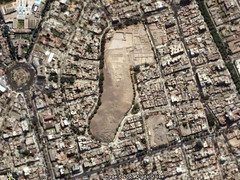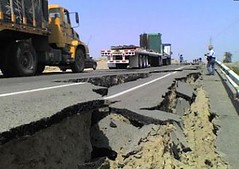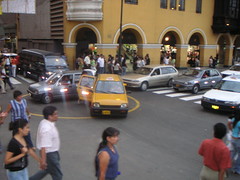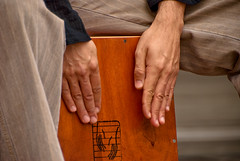The 1964 Lima soccer riot
On record as one of the worst disasters in sports history, it resulted in a death toll of around 300 people and saw as many has 500 injured.
It was May 24th of 1964 and a hugely important game was taking place in Peru’s Estadio Nacional in Lima. Argentina were playing Peru in a qualifier that would see the winner go to the Tokyo Olympic Games. It was not going well for Peru, who were 1-0 down with just a few minutes left of play.
Then what seemed like a miracle occurred. Peru scored an equalizer and jubilant celebration erupted throughout the home-dominated stadium where 48,000 watched. Peru only needed an equalizer to go through. The joy didn’t last long though as the Uruguayan referee Angel Pazos blew his whistle, shook his head and disallowed the goal.
Joy turned to anger as torrents of abuse were directed at the referee. An Afro-Peruvian fan from Callao, known locally as the “Negro Bomba” ran onto the pitch in an attempt to argue with the referee. One policeman held him back while another half a dozen arrived on scene, pulled out their batons and started beating him.

Negro Bomba pushes forward despite the impending beating
The response from the crowd wasn’t in the least bit supportive of the police. The agitated hoard of spectators surged forward. This is when tragedy struck.
The police fired canisters of tear gas into the stands and there was mass panic. Hundreds were crushed immediately in the stampede, many of them killed. As people attempted to flee the stadium, they found that the stadium management had locked all the gates and so many more were crushed in the stairwells.
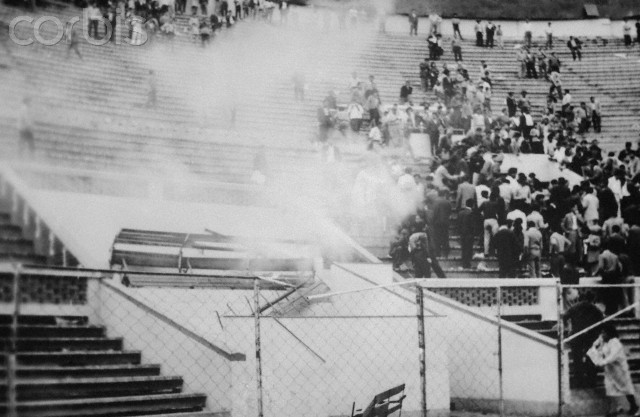
As people finally found ways out, a scene of devastation was left behind. The stadium was strewn with the bodies of the dead and injured, clouds of tear gas still lingering.
Out on the street, crowds of angry fans attacked police, linching those they could. As news of the massacre spread across the city, of parents searching among the dead for their missing children, riots broke out and more police were attacked. In order to put an end to the rioting and looting, the government sent the army out onto the streets and enforced a curfew.
Until this day it is considered one of the most notorious riots in the history of Association Football.





